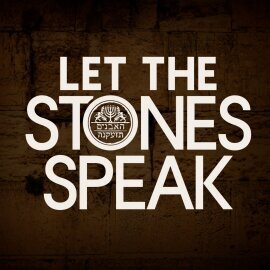
Around 170 years ago, British archaeologist Sir Austin Henry Layard excavated much of Assyrian King Sennacherib’s palace in ancient Nineveh. In the royal throne room, there stood a stunning 3-meter-high carving of a majestic city that was utterly unique in all of Sennacherib’s reliefs. Atop the tallest tower in the city was one individual holding up a royal standard. Could this be a depiction of ancient Jerusalem and could the lone figure be Judah’s King Hezekiah, of whom Sennacherib boasted that he besieged as a “bird in a cage.”
Excavating the time of David and beyond at Abel Beth Maacah with Prof. Naama Yahalom-Mack
Excavators in the City of David have uncovered a massive dam built during the time of Jerusalem’s biblical kings. The dating of the reservoir to about 800 B.C.E., two hundred years after King David reigned, was determined following the publication of new carbon-14 results of the dam wall. On today’s program, Brent Nagtegaal reviews the discovery in light of biblical history.
The Bible records that King David’s grandson, King Rehoboam, fortified 15 cities in the kingdom of Judah almost 3,000 years ago. The biggest of these was Lachish, recognized as Judah’s second most important city after Jerusalem. Prof. Yosef Garfinkel of Hebrew University is currently excavating at Tel Lachish. Two days before the end of the excavation, Let the Stones Speak host Brent Nagtegaal sat down with Professor Garfinkel to view the massive city wall his team is unearthing.
Shiloh is famous as the location of the biblical tabernacle. Archaeological excavations have been taking place annually on the north side of the ancient tel. Excavation director Dr. Scott Stripling believes his team may have found remains from the tabernacle itself, as well as the city gate and sacrificial deposits. In this end-of-season interview, Dr. Stripling leads Let the Stones Speak host Christopher Eames through the three main areas of excavation at Tel Shiloh.
The biblical city of Ai was one of three cities that met a fiery demise when the Israelites conquered the Promised Land: “So Joshua burnt Ai, and made it a heap …” (Joshua 8:28). Over the years, archaeologists have proposed a few sites as being biblical Ai. One such site is Khirbet al-Maqatir. Al-Maqatir was excavated by the Associates for Biblical Research for 14 seasons. This small site conforms with a number of key parameters for Joshua’s Ai. In today’s interview, which was recorded in May, Let the Stones Speak co-host Christopher Eames speaks with Abigail Van Huss, one of the site’s excavators, about the history of the site and its identification as Ai.
The Israel Antiquities Authority (IAA) safeguards the history of Israel. We’ve had the opportunity to work closely with the lAA on many projects over the years. Most recently, we’ve been working with Dr. Amit Re’em, the lAA director of Jerusalem district archaeology. Re’em is a man who has been “working, exploring, writing on ancient Jerusalem for more than 30 years.” In today’s interview, Let the Stones Speak co-host Christopher Eames interviews Re’em about his background in archaeology and his role at the Israel Antiquities Authority.
After three weeks of excavation, our work at Jerusalem’s royal quarter has ended. We had a successful and productive season in an area of the Ophel that has not been touched since Dr. Eilat Mazar’s 2009-2010 excavations. In today’s episode, Let the Stones Speak co-host Christopher Eames interviews excavation director Prof. Yosef Garfinkel about his perspective on the season and the future of the site.
Over a century of excavations at Tel Megiddo have finally unearthed a construction layer from the late seventh century B.C.E. and with it the largest assemblage of Egyptian pottery ever discovered in the southern Levant. This is at the precise time the Bible says King Josiah traveled to Megiddo to war against Egypt. On today’s program, host Brent Nagtegaal talks about the new discovery as well as the broader biblical context for King Josiah’s last stand at Megiddo.